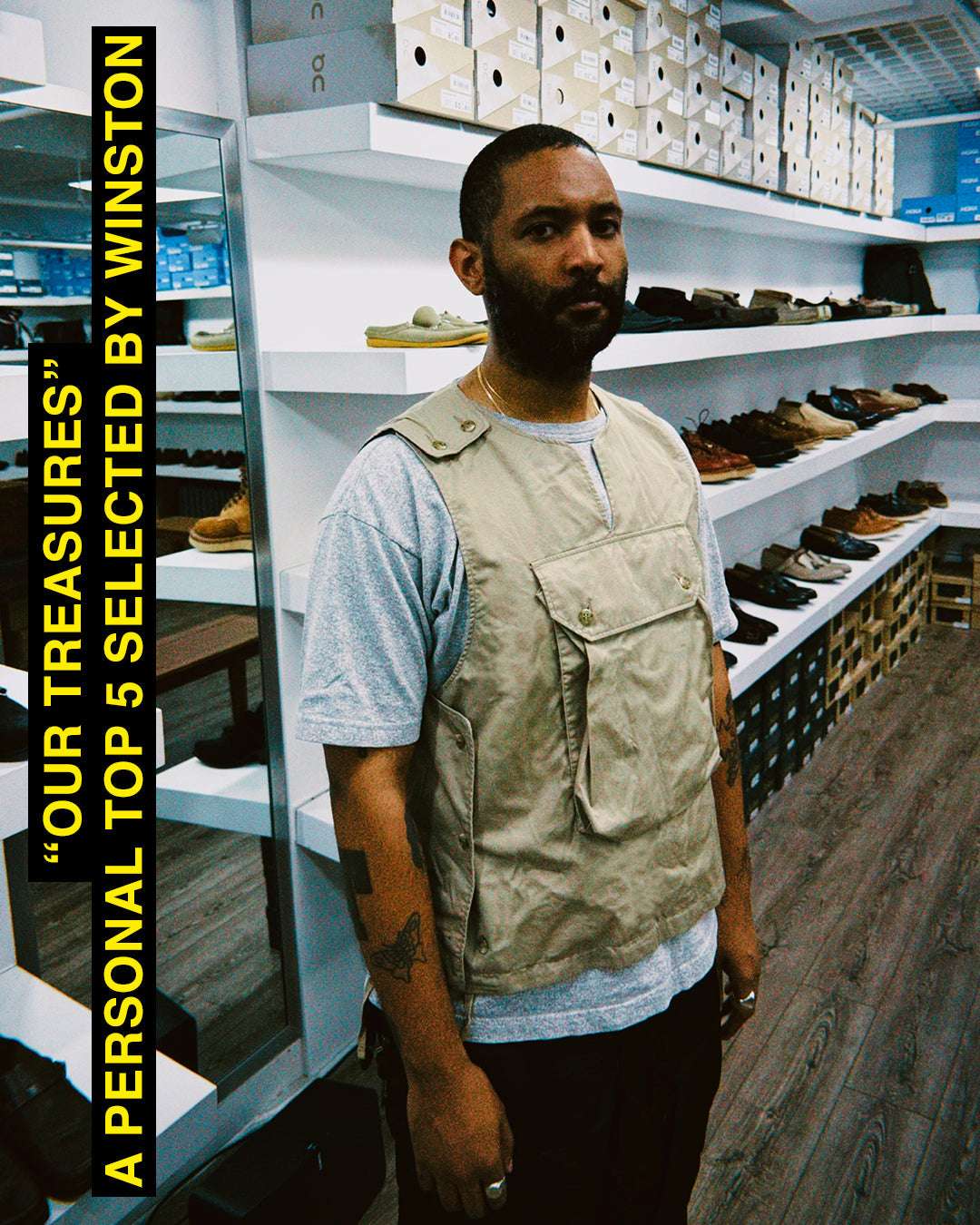ENGINEERED GARMENTS X PARABOOT - RELEASING 11.19.22

Engineered Garments and Paraboot band together to release a selection of collaborative footwear. Retooling Paraboot's ionic Michael model, Engineered Garments designer Daiki Suzuki evokes the brand's roots in the French Alps, creating a silhouette packed with alpine motifs.

Daiki discovered a deep affection for the mountains in Aomori, Japan, during the 1970s. This interest coincided with his enthusiasm for fashion, as he joined his high school's hiking club to find a use for his Jansport backpacks and North Face parkas. This love for outdoor gear - boots in particular - has lasted his entire life. While traversing his local peaks, Daiki coveted a pair of classic mountain boots made by Paraboot's sister brand Galibier, which featured D-ring eyelets, thick laces, and long nap suede.

When the opportunity to design a collaboration with Paraboot arose, Daiki tapped into the company's history of mountain gear, workwear, and elegance. The Michael, created in 1945 and the company's premier shoe model, was the natural choice for the project. Adored today for its stylish poise, the Tyrolean-style Michael was once the favorite footwear choice for letter carriers, farmers, and hunters due to its hard-wearing uppers and gripping notched soles. The Engineered Garments x Paraboot Michael goes a step further, pairing this practical nature with the design of vintage Galibier boots.

Daiki's first touch is the addition of two D-rings - gunmetal color for the Smokey and Whiskey colorways and black to match the Black pair - leaving just one eyelet rather than the standard three. The D-rings are offset, recalling the lacing system of genuine hiking boots. The Black pair features black laces, while the Smokey and Whiskey pair come with distinctive striped laces that give the shoes a busy, rugged look. Per Daiki's request, the shoe's piped seams and Norwegian welt are handsewn with zig-zag stitching. To top it off, Daiki chooses a combination of smooth leather and hairy suede as another homage to classic mountain boots.

As with all Paraboot products, the Engineered Garments x Paraboot Michael are crafted at their family-owned company factory in Saint-Jean-de-Moirans, at the foot of the French Alps. Each pair is handcrafted and comes with a notched Marche sole and unmistakable green tag that declare the shoe's authentic Paraboot identity.

This collaboration weaves Daiki's profound fondness for classic mountain boots with Paraboot's craftsmanship and exquisite French heritage to create superb shoes.

Available in three colors, Smokey, Whiskey, and Black, the Engineered Garments x Paraboot Michael will release November 19, 2022, in-store and online at nepenthesny.com
Paraboot Brand History
The story of Paraboot begins at the foot of the French Alps, in the small village of Izeaux, with Rémy-Alexis Richard, a cutter at a local factory. In 1908, with dreams of creating his own company, he moved to Paris and began designing leather and wooden-soled shoes.
He produced these goods in the countryside factories of his home province, Isère, under his business Richard-Pontvert - the surnames of him and his wife. Richard-Pontvert made leather and wooden soled shoes for nearly the next two decades, barring a brief stint during World War I Rémy spent repairing shoes for the French Army.
The business shifted after Rémy's 1926 visit to the United States, where he discovered waterproof American vulcanized rain boots - constructed from latex. Returning to France, he secured vulcanization patents from Charles Goodyear Jr and used his French factories to produce waterproof industrial work boots for industrial workers. Rémy then took this idea a step further - removing the boots' stiff wooden soles for comfortable and durable rubber ones. This rubber construction became such a core facet of the business that in 1927 he renamed the company "Para-boot" after Para, the Amazonian port from which the rubber originated.
Their new rubber sole design incorporated the now-iconic notches inspired by hikers of the French Alps. In 1937, Rémy's son Julien - an avid outdoorsman - joined the company. During World War II, despite widespread material shortages, Paraboot remained committed to quality - welted shoes made of leather with no plastic or glue.
At Julien's initiative, Parabot started marketing his shoes to standing workers, and in 1945 the Michael was created. Named after Julien's son and now current company chairman, the Michael is designed to be worn all day. The thick piping and Norwegian welt make the shoe durable, while the chunky soles have traction. It became the shoe of choice for French shepherds, loggers, factory workers, and letter carriers.
After the war, Julien's keen interest in leisure sports led to the creation of the Galibier brand - devoted to mountaineering and rock climbing and supplying the best climbers in the world. These technical products quickly became sought after worldwide, with exports to Japan, Italy, and America. Before long, the Galibier brand overtook Paraboot as the group's leader in sales.
By the 1970s, widespread cost overruns and shrinking profit margins threatened the business. Despite the best efforts of Julien's son Michel, in 1983 swelling debt and a weak dollar led Paraboot to declare bankruptcy. Italian distributor, W.P. Lavori in Corso, provided enough business to save the company. Seeing the actual value of the Michael and the Paraboot brand, WP included the Michael in the new look of Italian men's fashion, alongside tweed jackets, corduroy trousers, and polo-neck jumpers. This boost in interest caused orders to skyrocket and cemented the model's status as a footwear icon.
Though the company's products have transitioned from traditional use in labor or hiking towards fashion, the quality remains the same. Paraboot's products are sewn by hand and crafted in their factory at Saint-Jean-de-Moirans. A unique and genuinely French product, everyone should own a pair of Paraboot.

![[SEASON SKETCHES] IN A SILENT WAY](http://nepenthesny.com/cdn/shop/articles/Nepenthes_Editorial-1.jpg?v=1668553466)

